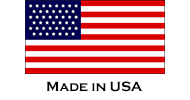

.jpg)
*Shop With Confidence * Fast Friendly Service * Quality Products * Value Priced

Customer Service
info@aloesecret.com
Botanicals
Healing Lives The Way Nature Intended
Consult your health care practitioner for all advice and treatment.
"The information stated here has not been evaluated by the Food and Drug Administration.
This product is not intended to diagnose, treat, cure or prevent any disease."

Aloe Secret is pleased to share with our clients world wide Herbal Products made by Barlow Herbal. Barlow Herbal is a company who’s herbal mastery has been passed down generations in the Barlow family.
We will continue to add new items monthly, so check back often.
Generation II/Barlow Herbal Specialties is proud to carry on the tradition of our father, Max G. Barlow. He dedicated his life’s work to helping people take charge of their own health. His herbal formulas are unique, wonderful, and life-giving. We work from his hand-written notes to make our extracts concentrated and potent. Their extraordinary strengths are achieved without heat, pressure or other mechanical means, giving you the strongest and highest quality extracts.
Until now, to order Dr. Barlow’s extracts you had to be a part of a very elite group. No advertising was done and only word of mouth referral put you on the company mailing list for the past 20 years. Naturopathic Doctors, Chiropractors, Herbalists, and Health Store owners can contact us to make the Barlow products available to your clients.
And here is a description of Lomatium Dissectum:
Lomatium Dissectum
Lomatium dissectum is a member of the parsley family growing in semi-arid climates in the northwest. Its large root has given it the name "biscuit root." This plant has traditionally been used to fight many infectious diseases, such as tuberculosis.
Today, wild crafted lomatium is a part of many herbal formulas for relieving common colds and the flu.
Cultivation: Not well understood at present. In the wild Lomatium dissectum grown on rocky slopes, frequently facing south, in semi-arid areas. Probably requires a warm period followed by a cold season and then another warm period.
Actions
Antibacterial, anticoagulant (possible), antifungal, anti-inflammatory, antimicrobial, (Candidia albicans, Clostridium (5 strains), Corynebacterium diptherium, Diplococcus pneumonia, E. coli, Hemophilus influenza, Mycobacterium tuberculosis, Neisseria gonorrhea, Proteus vulgaris, Pseudomonas aeruginosa, Salmonella, Shigella (3 strains), Staphylococcus aureus, Streptococcus pyogenes), antiseptic, antiviral (DNA and RNA viruses), expectorant, immunostimulant, tonic
Indications
Asthma, bacterial infection, bronchitis, candidiasis (douche), chronic fatigue syndrome, common cold, congestion, cough, cuts (topical), cytomegalovirus, distemper, Epstein-Barr virus, gardnerella infections, gastroenteritis, hay fever, herpes simplex, HIV, influenza, leukocytosis, lymphangitis, mononucelosis, pharyngitis (early stages), pneumonia, respiratory tract infection, rheumatism, shigellosis, skin infections (topical), sore throat (gargle), sores (topical), stomatitis (topical), tonsillitis (early stages), urinary tract infection, vaginal infections (douche), viral infections
Chemicals & Nutrients
Carbohydrates, Columbianetin, Columbianin, Coumarin derivatives, Essential Oils, Fatty Acids, Gums, Luteolin, Luvangetin, Protein, Resins, Saponins, Tannins, Vitamin C
Note
For mononucelosis, lymphangitis, and leukacytosis combine with Echinacea
Common name: Desert parsley
Parts used and where grown: The root of lomatium is used medicinally. The plant is native to and continues to grow in western North America.
Historical or traditional use: Native Americans of many tribes employed lomatium root to treat a wide variety of infections, particularly those affecting the lungs. Lomatium was used, particularly in the southwestern United States, during the influenza pandemic of 1917 with reportedly good results.
Active constituents: Tetronic acids and a glucoside of luteoling appear to be the main anit-microbial agents in lomatium rood.1 Little is known about how these compounds act or if other ones might be as important. The resin fraction ocasionally causes a whole-body rash in some people. Another set of constituents, known as coumarins, may also contribute to the onset of rash.
Are there any side effects or interactions? Use of extracts containing the resin (and possibly the coumarins) can, in some people, cause a whole-body rash. The safety of lomatium during pregnancy and lactation is unknown and is therefore not recommended.
At the time of this writing, no evidence of drug interactions with lomatium was found in the medical literature.
References
1. Vanwagen BC, Cardellina JH. Native American food and medicinal plants. 7. Antimicrobial tetronic acids from Lomatium dissectum. Tetrahedron 1986;42:1117.
2. Moore M. Medicinal Plants of the Pacific West. Santa Fe: Red Crane Books, 1993, 61-71.
Other Common Names: Carrotleaf Biscuitroot, Chocolate-tips, Cough Root, Fernleaf Biscuitroot, Fernleaf Lomatium, Lepotaenia, Leptotaenia, Lomatium dissectum
Range: Western N. America- southwards from Alberta and British Columbia.
Habitat: Open, often rocky slopes and dry meadows, often on talus
Fernleaf biscuitroot was widely employed medicinally by many native North American Indian tribes who considered it to be a universal panacea and used it especially in treating chest problems and skin complaints. This is an important native American Pacific Northwest anti-viral herb. Works where other anit-virals fall short. Fresh root (alcoholic) extract is best mode of administration. Lomatium was used, particularly in the southwestern United States, during the influenza pandemic of 1917 with reportedly good results. Although it is little, if at all, used in modern herbalism, but probably warrants investigation.
The whole plant, but especially the root, is disinfectant, pectoral, salve, stomachic and tonic.
The dried root was used in the treatment of rheumatism, stomach complaints, coughs, colds, hay fever, bronchitis, influenza, pneumonia and tuberculosis. The root was burnt and the smoke inhaled in the treatment of asthma and other chest complaints, it was also used as a herbal steam bath for treating chest complaints. The root was used to make a poultice of the peeled and crushed roots has been applied to open cuts, sores, boils, bruises and rheumatic joints. The root has been soaked in water and then used as an anti-dandruff for the hair.
An infusion of the leaves and stems has been used as a tonic.
The root oil has been applied as a salve to sores and also used as an eye was in the treatment of trachoma.
Root-cooked. Resinous and balsamic. The root can be dried and ground into a powder and then be mixed with cereal flours or added as a flavoring to soups etc. The roots have been boiled to make a refreshing and nutritious drink.
The pulverized root has been burnt as an incense.
Genus Species
Lomatium dissectum, Lomatium dissectum var. dissectum, Lomatium dissectum var. multifidum, Lomatium dissectum var. eatonii, Lomatium dissectum var. occidentalis, Leptoeania dissecta, Leptataenia multifida, Leptotaenia purpurea, Leptotaenia eatonii, Leptotaenia foliosa sert Parsnip, Indian Parsnip, Leptotaenia dissecta, Tohza, Toza, Wild Carrot
Location
Alberta, British Columbia, California, Colorado, Idaho, Montana, Nevada, Oregon, Utah, Washington, Wyoming
Synonyms
Biscuit Root, Desert Parsley, Desert Parsnip, Fern-Leafed Lomatium, Ferula dissoluta, Indian Desert Parsnip, Indian Parsnip, Leptotaenia dissecta, Tohza, Toza, Wild Carrot
Max G. Barlow - Barlow Herbal Co-founder / Master Herbalist / Author
Max G. Barlow (1935-1998) was a U.S. Authority on Medicinal Plants and a specialist in Plant Taxonomy. He’s been a staff member on Desert Survival Expeditions in the wild land of Rugged Eastern Utah Desert. With degrees in Botany and Zoology from Brigham Young University, Max often gave lectures at universities and was a former U.S. Educator in Biological Sciences.
Max G. Barlow is the author of the book on medicinal botany "From the Shepherd’s Purse". In the forward Dr. Milton P. Nelson, N.D. states "Max Barlow’s skill as a botanist combined with his talent as a writer, makes this book a unique contribution to the field of herbology. He has done extensive research into the medicinal uses of botanicals, and has a rich background in the medicinal-nutritional field. He is presently working with Dr. E.T. Krebs, Jr. on several important projects, one being a very effective natural plant respiratory antibiotic."
Since the publication of this book in 1979 until his death in 1998 Max dedicated his life’s work to the development of a very special extraction technique for several herbs and herbal combinations. His work with Dr. Krebs on "a very effective natural plant respiratory antibiotic" was Lomatium Dissectum.
SEES-2000 is the ENCAPSULATED form of Lomatium Disectum var. Multifida. Once the Lomatium root has been wild crafted, dried and cured, it is ground up and put into capsules with absolutely NO fillers or additives. This exceptional herb goes to work on deeper respiratory infections that are persistent in the lungs. This modality possesses all the Anti-viral and Anti-bacterial properties of the original Pure LDM Extract herbal tincture, now put into easy to swallow capsules.
Dosage: 1 capsule 2 times per day as needed
$32.00
A small percentage of people that use SEES-2000 may be allergic to one of its oil factions and will break out in a harmless skin rash. It is then suggested that the person discontinue use.








